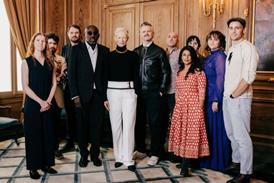Edge of Tomorrow looks set to be the first casualty of the “normal” pattern of the summer at the US box office says Jeremy Kay.
Heading into summer we can state with confidence that there will be casualties at the US box office. Sure as day follows night, a handful of movies are going to bomb.
It’s normal. And sadly for Tom Cruise, Emily Blunt and Doug Liman, it looks like normal in summer 2014 could kick off with Edge of Tomorrow.
The international performance for Cruise et al is shaping up nicely but the omens for the US are not good. I sincerely hope there will be a second weekend revival because Edge of Tomorrow is refreshingly good popcorn fare.
Regardless of the strong reaction from critics, Warner Bros should have had pretty sharp intel about how the movie would perform. Don’t they know exactly who still watches a Tom Cruise movie or who intends to watch one? More to the point, don’t they know precisely when and how audiences consume Cruise?
Failure is inevitable and it’s going to get easier to track younger stars and the taste of younger people, however I get the sense a fair chunk of box office flops are avoidable.
In Silicon Valley and Silicon Beach they operate in a culture that welcomes failure and mines lessons from it. Hollywood’s missteps, on the other hand, are calamitous precisely because executives seem to learn so little from them.
Attending the Stream Market digital conference in Santa Monica last week, I was dazzled by the depth of data on show. Presenting executives seemed to have numbers for everything.
In a session from Maker Studios, the MCN (multi-channel network) and YouTube superstar that Disney recently snapped up for an initial $500m, chief content officer Erin McPherson was virtually pulling graphs out of her ears.
Now I’m not sure how much good it does to throw numbers at everything and it would be naive to think digital entertainment companies don’t make mistakes. However the thought occurred that Disney’s top brass must be looking at all this with a sense of wonder.
Imagine if most of the time a movie distributor knew its audience so well that it could pinpoint them with its latest products, safe in the knowledge that there was a demand for those products and the audience was telling the distributor when and how they wanted to receive them.
Digital entertainment companies talk about operating on a two-way street where conversations with the consumer are ongoing, allowing the creators to tweak and tweak until a product evolves to where it needs to be.
Maker knows this is the best way to find out what the Millennials, the Generation Y’ers born anytime from the early 1980s to the early 2000s, want. That’s why they have such uniquely close ties with their content creators. And Maker’s reach generates more than 6.5bn streams a month.
Disney now has a foot in the door after chairman and CEO Bob Iger personally drove the acquisition. He got a team to scrutinise the pros and cons of buying Maker for 18 months before he signed.
YouTube will still own the transactional details relating to Maker’s audience and it will be interesting to see how much intel Disney can extract from this arrangement because this is the Holy Grail.
Apart from a merchandising play and the ability to exploit its IP through the kind of short-form content Maker is so good at creating, having direct access to the customer and knowing all about them - owning the audience, if you will — must be the end goal for a studio like Disney.
Presumably that’s what DreamWorks Animation wanted among other things when it shelled out $33m for Awesomeness TV. The consensus at the Stream Market was that Hollywood will step up its overtures to MCNs and digital content companies.
It has to. Focus groups and pre-release test screenings in West Covina east of Los Angeles do not offer enough and can no longer hold such sway over Hollywood.









![[Clockwise from top left]: 'The Voice Of Hind Rajab', 'A House Of Dynamite', 'Jay Kelly', 'After The Hunt', 'The Smashing Machine'](https://d1nslcd7m2225b.cloudfront.net/Pictures/274x183/1/7/0/1459170_veniceawards_837515.jpg)














No comments yet